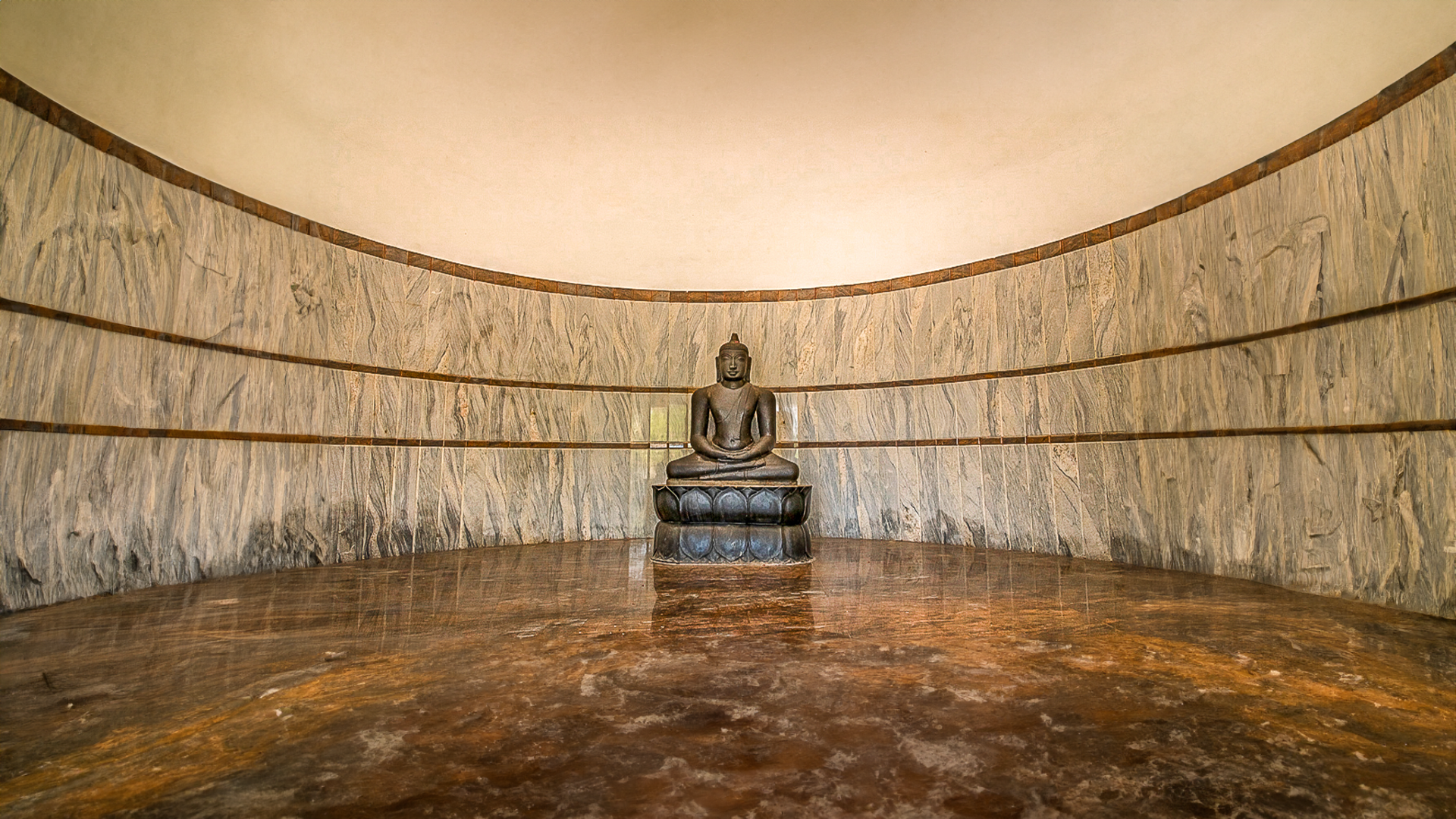

Buddhism, one of the world's oldest spiritual paths, has left an indelible imprint on the cultural and spiritual landscape of Tamil Nadu. With its origins rooted deeply in the teachings of Gautama Buddha, this peaceful philosophy made its way to the southern realms of India, intertwining with local traditions and practices. Today, Tamil Nadu stands as a testament to the confluence of time-honored Buddhist teachings and Dravidian heritage, making it an unmissable destination for those seeking a blend of history, spirituality, and culture.


Situated within the sprawling Adyar estate near Besant Nagar, the Theosophical Society is a sanctuary dedicated to Theosophy—a philosophy that unveils universal wisdom at the core of all religions, free from embellishments.
Here, a grey sandstone statue of Lord Buddha, gifted by Annie Besant, rises in reverence. This statue symbolizes the Teacher of Dharma turning the Wheel of the Law, framed by Tibetan characters. Nearby thrives India's second-largest Banyan tree, grown from a branch of the sacred tree beneath which Buddha attained enlightenment.
Adding to its historical significance, a Zen Memorial Stone, donated by the Institute of South Indian Buddhist Studies, honours Bodhidharma, the 6th-century monk who introduced Zen Buddhism to China.
How to reach:
By Road: Frequent buses are available for reaching Theosophical Society.
By Train: The nearest railway station is Chennai Central, approximately 11 kilometres away.

Located in Pulichapallam within Vanur Taluk, Villupuram District, the Mangala Buddha Vihar offers a serene sanctuary. Its architectural elegance is exemplified by a magnificent 30-foot standing Buddha statue at the entrance. The meditation hall inside exudes tranquillity, with a beautiful Buddha statue at its centre while the garden features serene settings ideal for reflection and contemplation. The Vihar also holds significant value as a repository of Buddhist knowledge, boasting a library with writings by esteemed Buddhist scholars and monks from around the world.
How to reach:
By Road:

In the Thanjavur Art Gallery, several remarkable Buddha statues find their home. Among them, an 11th-century CE Buddha statue from Madagaram village stands at 4 feet in height, while another standing Buddha statue graces the Durbar Hall Museum, possibly dating from the 12th to the 14th century, featuring intricate drapery work. An ancient 5-foot Buddha statue from Patteswaram near Kumbakonam, estimated to be from the 15th century, resides alongside. Additionally, the gallery houses a modest 8-inch bronze standing Buddha statue whose exact origin remains unmarked. However, its stylistic resemblance to Nagapattinam statues suggests a connection to Nagapattinam or its environs.
How to reach:
By Train: Thanjavur Junction railway station is the nearest railway station to Thanjavur art gallery.

Kanchipuram rose to fame as a Buddhist center right from the 2nd Century BCE, when Poompuhar, the earlier center in Tamil Nadu, submerged in the sea.
Buddhist presence in Kanchi finds mentioned in many Tamil Sangam.
According to Vajrayana Buddhism, Kanchi is one of the twenty-four sacred power places.
Kanchi is the heart of the Dakini (the spontaneous play of the basic space) and a sacred place of Dakinis (where the vibrancy of wisdom activities naturally plays out).

In 526 AD, after the passing of his Guru Prajnatara, Bodhi Dharma embarked on a journey to China, leaving an indelible mark on the spiritual landscape. Before that, he served as a devoted Buddhist monk within the Tamil Society. Within the temple's sacred precincts stands a revered statue of Bodhidharma, a unique honour for this hallowed place. The temple also features a statue dedicated to Manimegalai, further enhancing its spiritual significance.
Notable celebrations include Buddha Jayanthi (Buddha Poornima) in May, Dhamma Chakka Pravartan Day (commemorating Lord Buddha's First Teaching) on October 14th, and a monthly observance on Pournami Day.
How to reach:
By Air: The temple is situated 81 kilometres from Chennai Airport.
By Train: It is conveniently accessible, with a distance of only 3 kilometres from Kanchipuram Railway Station.
By RoadFor those travelling by bus, the temple is a mere 4 kilometres away from the Collector Office (Gandhi Nagar) Bus Stand.

Tiruvannamalai, the ancient remnants of Buddism.
Headless Buddha statues belived that these two statues protect their farming against drought.
There is also a dilapidated temple with gajaprishta style architecture (old Buddhist chaitya-halls) near the Jawadhu hills.

The last citadel of Buddhism in South India
By 1930s, around 350 bronze statues of Buddhas and Bodhisattvas were discovered from various parts of Nagapattinam. (Only 80 is given to Chennai Museum)
Chudamani Vihara, constructed in 1006 CE by the Srivijayan king Sri Mara Vijayattungavarman of the Sailendra dynasty with the help of Rajaraja Chola I.
Sangamangalam, Buddhamangalam, Putthakkudy, etc around Nagapattinam, are reminiscence of its Buddhist past.

Sri Vijayan King Sri Mara Vijayattunga Varman, with the support of Great King Raja Raja Cholan, built this Vihara in 1006 CE.
From 1856 to 1857, over 350 Buddha Bronze idols from the 11th to 16th centuries were discovered in this location.
According to the data recorded in King Kulothunga Chola I's Animangalam Copper Plate, Kasiba Thera (a Buddhist monk) restored the vihara in the 6th century AD also with help of Naganadu (Nagapattinam) monks.

This humble town of today was once the glorious capital and port city of the early Chola empire of the Sangam period, rich in its cultural diversity, legends, festivals and international trade.
It has the in dept history of Buddhism in Tamil Nadu.
In the height of its glory, around 300 BCE, the ancient royal city of Puhar was swallowed by the ocean.
Representation of Buddha’s footprint, discovered from the excavation of the remains of a monastery in Pallavaneswaram, Poompuhar.
The Tamil Nadu coast was devastated by another tsunami, signs of an old city under the ocean surfaced.
Later, marine archeologists discovered structures of a city as well as a standing Buddha statue from under the ocean that records to be the earliest of the Buddha statues of the Dravida land. 2
This statue is dated by the archeologists to be from the 1st – 2nd Century CE (AD).

Buddhism in Perambalur is evident through two ancient Buddha statues, one at Ogalur village and another at Paravai village.
‘Dubai Buddha’, at Ogalur
A Buddha at the crossroads, at Paravai
Assumed to be a Buddha statue in a bus stop at a nearby village named Perumathur (Jain Tirthankara)

The cities of Kumbakonam and Thanjavur, the erstwhile capitals of the Medieval Chola Kingdom hold rich memories of their glorious past.
These cities have long forgotten the Buddhist past, many magnificent statues of the Buddha and Bodhisattvas are found there, revealing the rich heritage of Buddhism in Thanjavur and Kumbakonam from its ancient period.
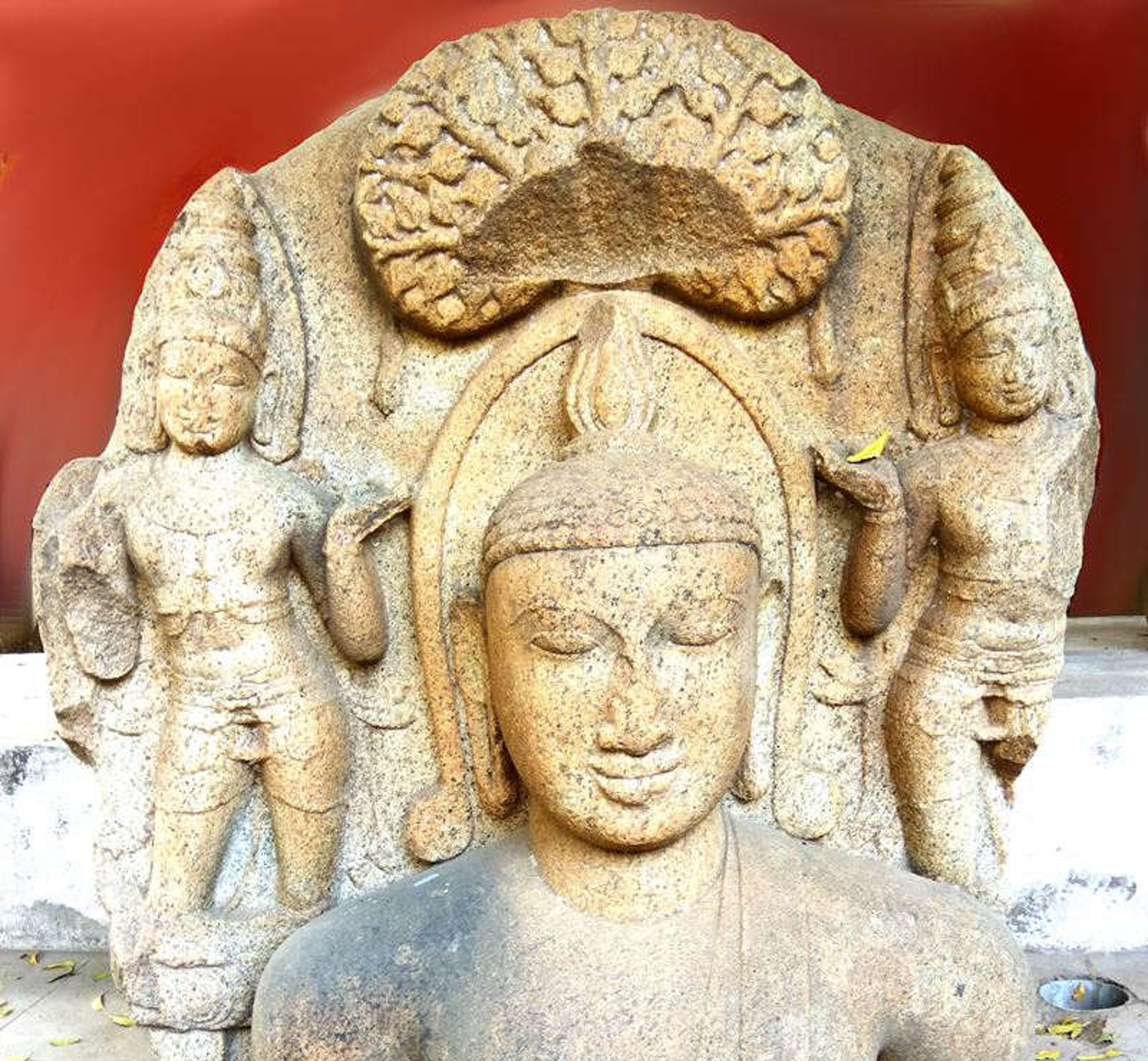
Tiruchirappalli is the heartland of erstwhile Chola kingdom.
It is home to some of the most interesting ancient Buddha statues in Tamil Nadu.
These statues indicate that Buddhism, and particularly Mahayana Buddhism survived in the Chola heartland all through the Chola reign

Buddha statue with a mustache and beard at Mangalam in Musiri Taluk of Tiruchirappalli. (resemblance to Guru Padmasambhava). The statue is in the Aravayee Amman Kovil.
There is a Temple built for Buddha recently, next to the Aravayee Amman Kovil, Mangalam, for keeping the ancient Buddha statue there.
An uncommon Buddha statue, also from Musiri taluk, is now kept in the Tiruchirappalli Museum.
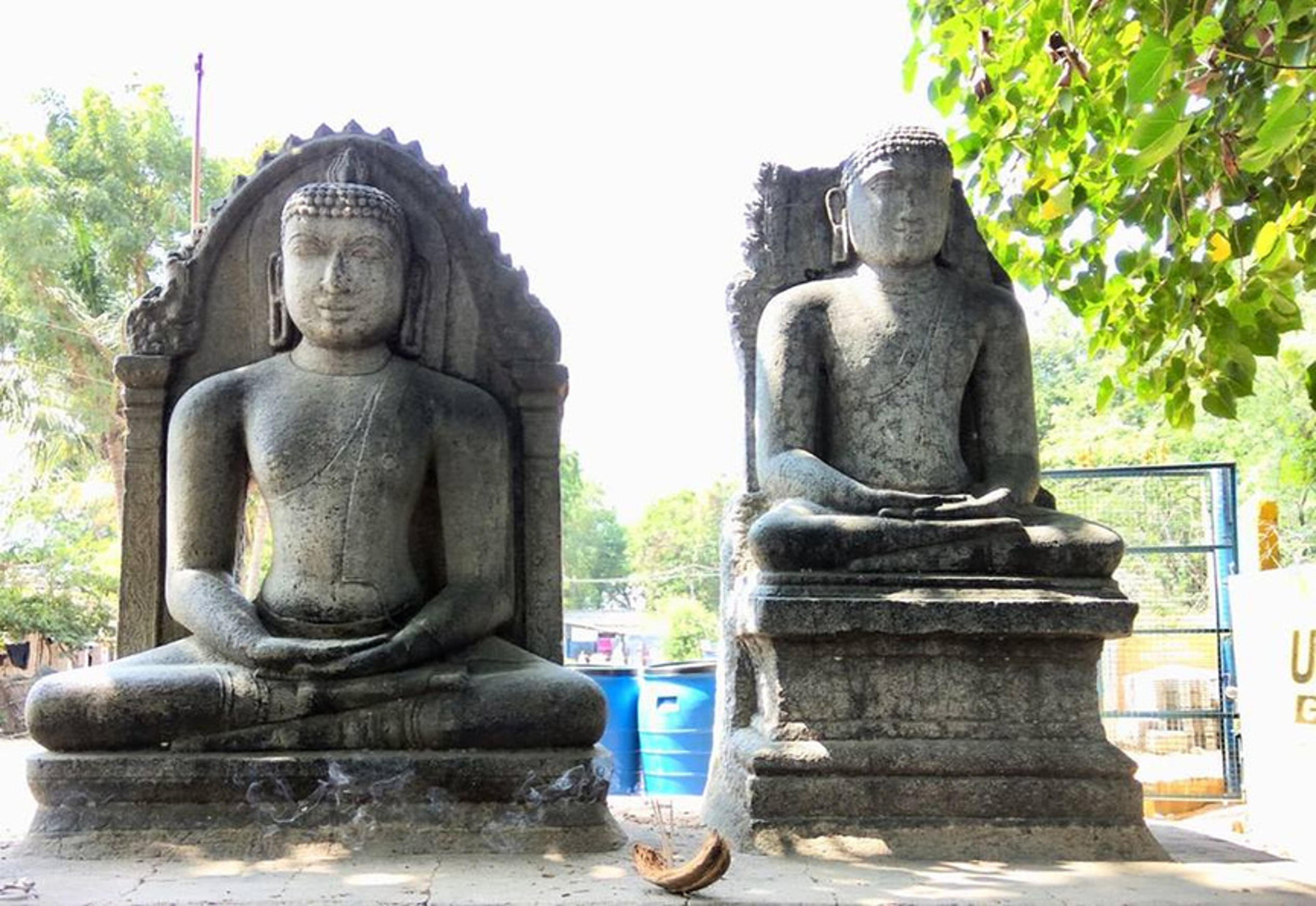
Ariyalur is a Land of Ancient Viharas
It is an interesting fact that Gangaikonda Cholapuram in Jayankondam, Ariyalur district was developed as the capital of the Cholas by 1025CE.
Buddhism also became active in Ariyalur around the same time. This indicates that even Rajendra Chola I who was staunch Saivite continued to support Buddhism.

Ancient Buddha statue in Jayankondam, Ariyalur district. It is known as Pazhuppar among the locals.
Another statue below the pedestal of the Buddha statue with only the head visible outside. (Bodhisattva statue).
Ancient Buddha statue from Suthamalli, Ariyalur district (Kept at Chennai Museum)
Ancient Buddha statues (two) at Vikkiramangalam, Ariyalur district.
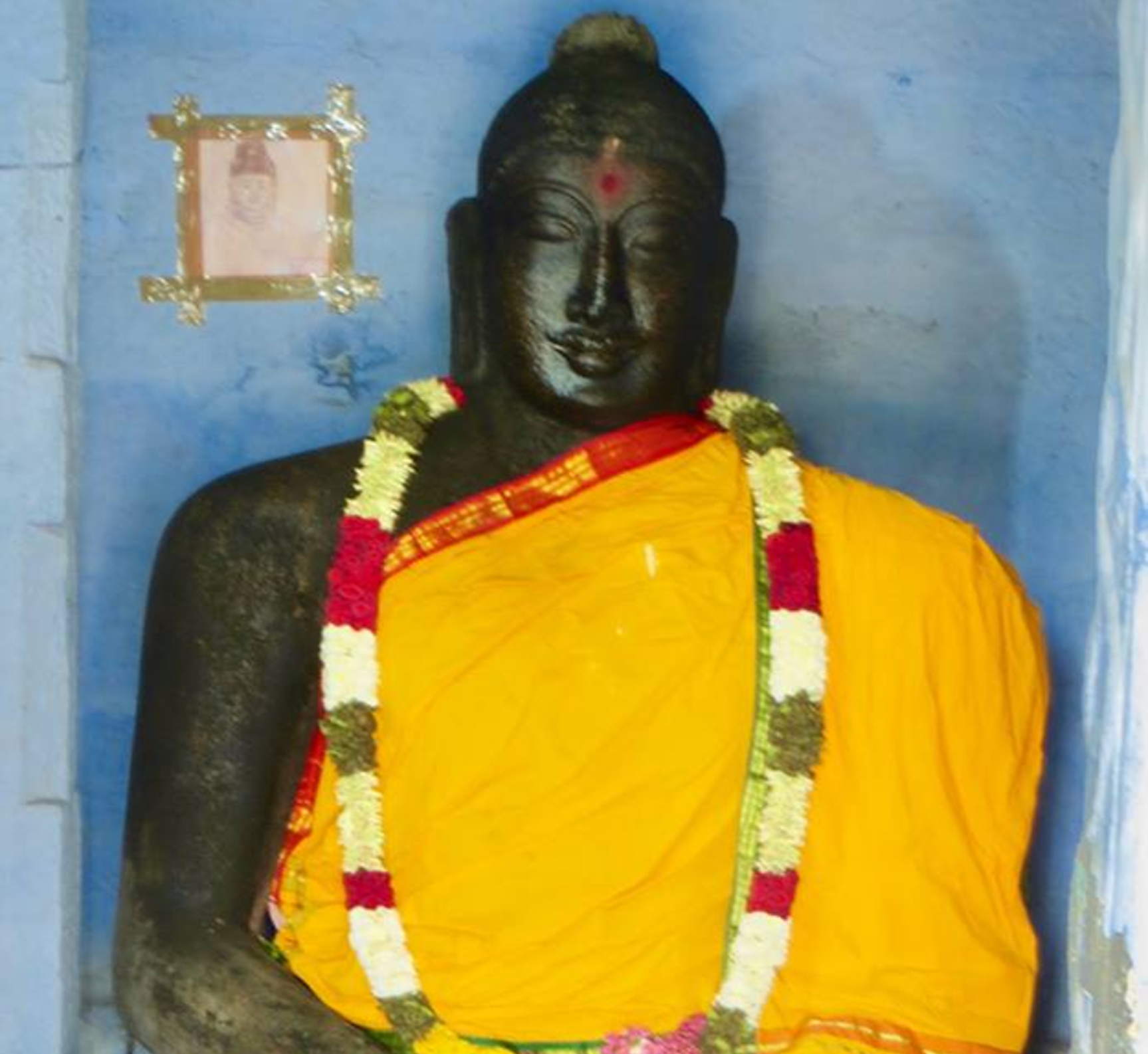
Salem and Dharmapuri are rich in Buddhist heritage.
Thiyaganur, a remote village in Salem district, is home to two ancient Buddha statues.
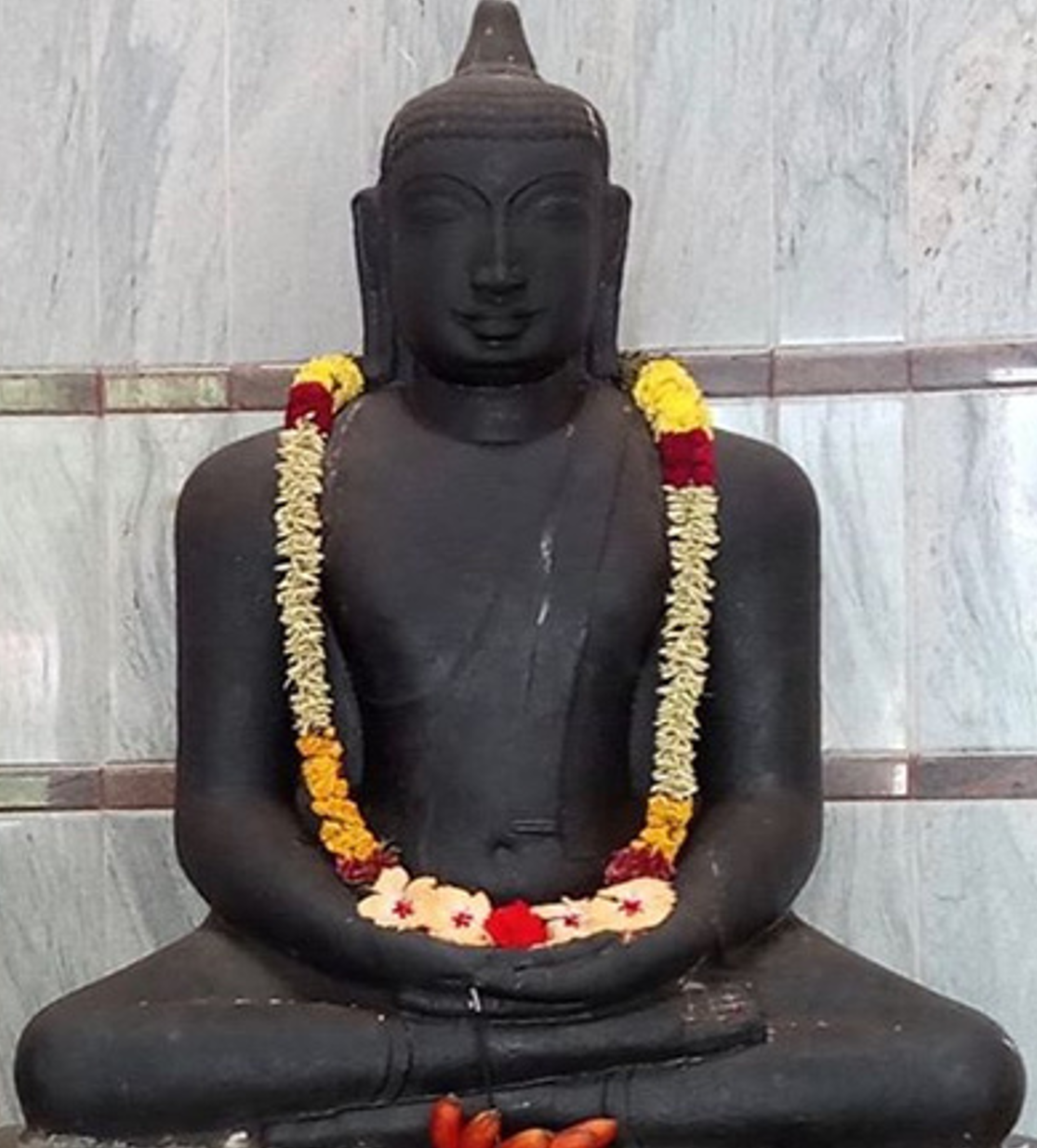
Small Vaishnavite style temple
A majestic Buddha statue at Thiyaganur

An ancient Buddha statue on the premises of Veerattaneswarar Temple in Thiruvathigai near the town of Panruti.
An ancient Buddha statue is in the town of Pennadam., Buddhar street.

The Smiling Buddha of Ulagiyanallur
Dilapidated Vihara (monastery) in Ulagiyanallur
| Activity | Place | Time | Distance | |
|---|---|---|---|---|
| 1 | Reaching Chennai Airport | 6.00AM | ||
| 2 | Freshening up from nearby restaurant | Amrita Amore | ||
| 3 | Metro from airport to egmore | Egmore station | 7.00AM – 7.45Am | 17.7 km |
| 4 | Cab from Egmore metro to Srilankan buddha temple | 5 mins distance(7.55am) | 1.5km | |
| 5 | 1st destination | Srilankan Buddhist temple | 8.00 AM | |
| 6 | Learm About buddhist culture | Exploring the library | ||
| 7 | Exploring the temple premises | 1hr (9.am) | ||
| 8 | Visiting the museum | Chennai museum | 9.00 AM | 450 mts |
| 9 | Exploring the buddhist scriptures and artifacts | The bronze gallery in Chennai museum | 9.00 to 10.00 | |
| 10 | Breakfast (Cab) | TTDC drive in restuarant | 10.15 am | 3.7 km |
| 11 | Starting from drive in | 10.45AM | ||
| 12 | 2nd destination Towards buddha vihar | South india buddha vihar (Perambur) | 11.15 am | 8.2km |
| 13 | Participate in meditation session | South indian Buddha vihar | ||
| 14 | Explore buddha vihar | South indian Buddha vihar | 11.30AM | |
| 15 | 3rd destination Towards Buddha vihar buddhist temple | Buddha vihar buddhist temple | 12.00pm | 1.3 km |
| 16 | 4th destination Cab ride towards Theosophical society buddha temple | 1.00pm | 19km | |
| 17 | Experience the thai cuisine | Benjarong Thai restuarant | Till 2.00 pm | 14km |
| 18 | Theosophical society | 2.15 pm | 5.4km | |
| 19 | Visit adyar library and research centre | Theosophical society | ||
| 20 | Visit buddha temple | Theosophical society | 4.30 .pm | |
| 21 | Drop back at the aiport |
The Sri Lanka Maha Bodhi Centre is a Sri Lankan Buddhist establishment in Chennai, India. It is located in Egmore, opposite to the Egmore Railway Station. It is run by the Sri Lanka Maha Bodhi Society and serves as a monument of friendship between Sri Lanka and India.
The centre has a small temple of Lord Buddha, named Buddha Vihar, which is the only Buddhist temple in Chennai. The temple has an 18-ft life-size statue of Lord Buddha in a standing posture (Abhya Mudra) in the main hall.
The centre also has a free homeopathic clinic and a lodging facility for Buddhist pilgrims from Sri Lanka, named Maha Bodhi Nikethanaya.
The Maha Bodhi Society of India was founded by Anagarika Dharmapala in May 1891 with the objective of restoring the ancient Buddhist shrines at places such as Gaya and Sarnath.
The Buddhist bronzes gallery in Chennai museum is a part of the archaeological section of the museum, which displays various antiquities of the historic period of South India.
The gallery has more than 85 bronze figures of Buddha and Bodhisattvas, belonging to the Mahayana tradition of Buddhism. These figures date back to the Chola period (9th to 17th century CE) and were discovered in Nagapattinam and other places in Tamil Nadu.
The figures are very detailed and realistic, depicting scenes from the life of Buddha. Some of the figures have palm marks, urna marks, or usnisa marks, which are considered as signs of great beings in Buddhism.
The gallery also has a seven-foot statue of Buddha in standing position, belonging to the 2nd century CE, that was excavated in a Hindu temple of Kanchipuram. This statue is one of the oldest examples of Buddhist art in South India and shows the influence of the Gandhara style.
The Buddhist bronzes gallery in Chennai museum is a rare and valuable collection that offers a glimpse into the cultural diversity and artistic excellence of Tamil Nadu. It also reflects the history and popularity of Buddhism in this region, which gradually faded away by the 18th century.
The South Indian Buddha Vihar is a Buddhist temple and a cultural centre in Chennai, Tamil Nadu. It is located in Perambur, opposite to the Murasoli Maran Park.
It is run by the South India Buddha Vihar Trust and aims to spread the teachings of Buddha and Dr. B.R. Ambedkar among the people of South India.
The temple has a 24-ft statue of Lord Buddha in a standing posture (Abhaya Mudra) in the main hall. The statue was installed in 2019 and is made of fibre glass.
The temple organizes various cultural and social activities, such as Dhamma classes, meditation sessions, festivals, quiz competitions, blood donation camps, and free medical camps. The temple also distributes Buddha statues to the Dhamma followers who want to establish Buddhism in their homes.
The South Indian Buddha Vihar is a leading Buddhist establishment in Tamil Nadu and serves as a monument of peace, harmony, and social justice
Buddhism has a significant role in the Theosophical Society in Chennai, as it is one of the religions that the society studies and respects.
The Theosophical Society was founded in 1875 by Helena Blavatsky and Henry Olcott, who were interested in exploring the occult and the Eastern religions, especially Buddhism
Buddhism is one of the major religions that the society has studied and supported over the years. The society has temples and shrines dedicated to different branches of Buddhism, such as Theravada, Mahayana, and Vajrayana.
It also has a library, a museum, and a bookstore that contain valuable books and artifacts related to Buddhism and its history.
The society has also contributed to the revival and spread of Buddhism in India and other countries. It has organized lectures, seminars, publications, and pilgrimages on Buddhist topics.
It has also supported various Buddhist movements and organizations, such as the Maha Bodhi Society, which was founded by Anagarika Dharmapala, a prominent Theosophist and Buddhist reformer
The society celebrates various Buddhist festivals, such as Vesak, Buddha Jayanti, Dhamma Day, Sangha Day, and Bodhi Day.
It also conducts meditation sessions, Dhamma classes, and cultural programmes for its members and visitors.
The society welcomes all people who are interested in learning and practicing Buddhism or any other religion. It is a peaceful and serene place that offers a glimpse into the history and philosophy of Buddhism and its art.
Arrival at Chennai International Airport at 8:00 am
Freshening up and breakfast at a nearby restaurant – 2 hours
10:00 am - Metro from Chennai International Airport to Egmore Metro Station (45 mins journey)
10:45 am - Cab from Egmore metro station to Chennai Museum (10 mins journey)
10:55 am to 12:00 pm - Explore Chennai Museum
12:00 pm - Cab from Museum to TTDC Drive-in Restaurant (10 mins journey)
12:10 pm - Lunch at TTDC Drive-in Restaurant (1.5 hours)
13:40 pm - Take a cab to Indoburma Buddhist Temple Cultural Centre (1 hour journey)
14:40 pm to 15:40 pm - Indoburma Buddhist Temple Cultural Centre
15:40 pm - Cab to Rohini Buddha Vihar (45 mins journey)
16:25 pm - Reach Rohini Buddha Vihar (opens at 17:00 pm)
17:00pm to 18:00 pm - Explore Rohini Buddha Vihar
18:00pm - Departure to Kancheepuram by cab (2 hours journey)
18:00pm - Departure to Kancheepuram by cab (2 hours journey)
20:30pm t0 21:30pm - Dinner
09:00am - Complimentary breakfast at Hotel Tamilnadu Kancheepuram (1 hour)
10:00am - Cab to Bodhidharma Buddhist Worship Centre (5 mins journey)
10:05am to 10:50am explore Bodhidharma Buddhist Worship Centre
10:50am - Cab to Bodhi Dharama Buddha Vihar (10 mins journey)
11:00am to 11:45am - Bodhi Dharma Buddha Vihar
11:45 am - Cab to Hotel Tamilnadu Kancheepuram (15 mins journey)
12:00pm to 13:30pm - Lunch and check-out Hotel Tamilnadu Kancheepuram
12:00pm to 13:30pm - Lunch and check-out Hotel Tamilnadu Kancheepuram
14:30pm - 15:30pm Dhamma Kanchi Vipassana Meditation Centre
15:30pm - Departure to Chennai International Airport (1 hour journey)
16:30pm - Chennai International Airport
The significance of Buddhism in Chennai, particularly in the context of the Egmore Museum, lies in the museum's collection of Buddhist artifacts and its role in preserving and showcasing the cultural and historical heritage of Buddhism in the region. Visitors can explore sculptures, inscriptions, and other artifacts that depict the life of Buddha and the development of Buddhist art. By, housing and preserving Buddhist artifacts, the Egmore Museum plays a crucial role in safeguarding the cultural and historical heritage of Buddhism in Chennai and South India. This helps ensure that future generations can learn about and appreciate the significance of Buddhism in the region.In summary, the Egmore Museum in Chennai has significance in showcasing and preserving the cultural and historical heritage of Buddhism in the region. It offers a valuable opportunity for people to learn about the history, art, and influence of Buddhism in Chennai and South India.
The Indo-Burma Buddhist Temple and Cultural Centre in Chennai holds significant cultural and religious importance, especially in the context of Buddhism. The temple and cultural centre play a crucial role in promoting Buddhism in Chennai and the surrounding region. It serves as a place of worship, meditation, and learning for Buddhists and individuals interested in Buddhism. The centre is dedicated to preserving and showcasing the cultural heritage of Buddhism, not only from India but also from Burma and other Southeast Asian countries. It houses artifacts, sculptures, paintings, and other items that depict the history and traditions of Buddhism in the Indo-Burma region.
Buddhist viharas or monasteries have great significance in promoting Buddhist teachings, practices, and cultural heritage. They serve as centres for meditation, religious gatherings, and community activities. Viharas are places where Buddhists come to practice their faith. They may offer regular meditation sessions, dharma talks, and other religious activities to help people deepen their understanding of Buddhism. Viharas often house statues, paintings, and artifacts related to Buddhism. They play a role in preserving and showcasing the cultural and artistic heritage of Buddhism.
The Bodhidharma Buddhist Worship Centre in Kancheepuram is a temple and a cultural centre dedicated to Bodhidharma, the Buddhist monk who is considered as the founder of Zen Buddhism and the Shaolin martial arts. Bodhidharma was born in Kancheepuram in the 5th or 6th century CE and travelled to China and Japan to spread the teachings of Buddha. The reason for visiting this centre is to learn more about the life and legacy of Bodhidharma, who is revered as a great master and a bodhisattva by many Buddhists. The centre has a statue of Bodhidharma in a standing posture, which was installed in 2016 in an ancient mandapam that was abandoned long ago. The centre also has a library, a museum, and a bookstore that contain valuable books and artifacts related to Bodhidharma and Buddhism. The centre organizes various spiritual and social activities, such as meditation sessions, Dhamma classes, festivals, quiz competitions, blood donation camps, and free medical camps.
The vihara is dedicated to Bodhidharma, who is considered the founder of the Zen school of Buddhism. Bodhidharma is believed to have travelled from India to China in the early 6th century CE, where he played a crucial role in the development of Chan (Zen) Buddhism. He is highly revered in Zen Buddhism for his teachings on meditation and enlightenment. The Bodhi Dharma Buddha Vihar serves as a place for Buddhists to gather for worship, meditation, and cultural activities related to Zen Buddhism and the teachings associated with Bodhidharma.
TVipassana means to see things as they really are, is one of India's most ancient techniques of meditation. It was taught in India more than 2500 years ago as a universal remedy for universal ills, that is Art of Living. The technique of Vipassana Meditation is taught at ten-day residential courses during which participants learn the basics of the method, and practice sufficiently to experience its beneficial results. There are no charges for the courses - not even to cover the cost of food and accommodation. All expenses are met by donations from people who, having completed a course and experienced the benefits of Vipassana, wish to give others the opportunity to also benefit.
06:00 AM: Arrive at Chennai International Airport.
07:00 AM: Proceed to Kancheepuram (approximately 75 km, 2 hours by road).
09:00 AM: Check-in at the Tamil Nadu Tourism Corporation guesthouse/hotel in Kancheepuram.
10:00 AM: Visit the Bodhii Dharma Buddhist Worship in Kancheepuram.
12:00 PM: Lunch at a local restaurant.
02:00 PM: Explore Bodhi Dharma Buddha Vihar in Kancheepuram.
02:00 PM: Explore Bodhi Dharma Buddha Vihar in Kancheepuram.
06:00 PM: Return to the guesthouse/hotel for the night.
08:00 AM: Check out from the Kancheepuram guesthouse/hotel.
09:00 AM: Drive to Poompuhar (approximately 175 km, 3-4 hours by road).
01:00 PM: Lunch at a restaurant in Poompuhar.
02:30 PM: Explore Poompuhar Beach and nearby attractions.(guided tour)
02:30 PM: Explore Poompuhar Beach and nearby attractions.(guided tour)
02:30 PM: Explore Poompuhar Beach and nearby attractions.(guided tour)
02:30 PM: Explore Poompuhar Beach and nearby attractions.(guided tour)
07:00 AM: Breakfast at the guesthouse
11:00 AM: Visit the Thanjavur Maratha Palace and Art Gallery.
01:00 PM: Lunch at a local restaurant.
03:00 PM: Drive to Tiruchirappalli (approximately 60 km, 1.5 hours by road).
05.15 PM: Reach Tiruchirappalli International Airport.
The Bodhidharma Buddhist Worship Centre in Kancheepuram is a temple and a cultural centre dedicated to Bodhidharma, the Buddhist monk who is considered as the founder of Zen Buddhism and the Shaolin martial arts.
Bodhidharma was born in Kancheepuram in the 5th or 6th century CE and travelled to China and Japan to spread the teachings of Buddha.
The reason for visiting this centre is to learn more about the life and legacy of Bodhidharma, who is revered as a great master and a bodhisattva by many Buddhists.
The centre has a statue of Bodhidharma in a standing posture, which was installed in 2016 in an ancient mandapam that was abandoned long ago. The centre also has a library, a museum, and a bookstore that contain valuable books and artifacts related to Bodhidharma and Buddhism.
The centre organizes various spiritual and social activities, such as meditation sessions, Dhamma classes, festivals, quiz competitions, blood donation camps, and free medical camps.
There is a seven-foot statue of Buddha in standing position, belonging to the 2nd century CE, that was excavated in a Hindu temple of Kanchipuram.
This statue is one of the oldest examples of Buddhist art in South India and shows the influence of the Gandhara style. It is made of white marble and has an inscription in Brahmi script on the pedestal.
This statue is one of the oldest examples of Buddhist art in South India and shows the influence of the Gandhara style. It is made of white marble and has an inscription in Brahmi script on the pedestal.
The Hindu temple where the statue was found is the Ekambareswarar Temple, which is dedicated to Lord Shiva. The temple is one of the Pancha Bhoota Stalas, representing the element of earth.
The temple has a history of more than 1000 years and has been expanded by various dynasties such as the Pallavas, Cholas, and Vijayanagaras.
The temple has a huge gopuram (tower) with 11 stories and a height of 192 feet, making it one of the tallest temple towers in India.
The presence of the Buddha statue in the Ekambareswarar Temple indicates that Buddhism was once a flourishing religion in Kanchipuram and had co-existed with Hinduism for a long time.
However, due to various factors, such as the revival of Hinduism, the decline of trade, and the invasions by foreign powers, Buddhism gradually faded away from Tamil Nadu by the 18th century CE. The statue is a rare and valuable relic that offers a glimpse into the cultural diversity and artistic excellence of Tamil Nadu.
The excavations in Poompuhar, a former port city and capital of the Cholas in Tamil Nadu, have revealed some interesting findings related to Buddhism. Some of the findings are:
A standing Buddha statue of 1st-2nd Century CE (AD) discovered from under the sea. This is, possibly, the earliest of the Buddha statues of the Dravida land. It is in the style of Gandhara sculptures, but small in size. It is currently kept in the Marine Archeology Museum of Poompuhar.
A tiny and cute representation of the footprint of the Buddha, discovered during excavation, and currently kept at Marine Archeological Museum at Poompuhar. This indicates that the disciples followed the path traversed by the Buddha.
The remains of an ancient Buddhist vihara and chaithya at Pallavanesvaram, about 1km inland from Poompuhar. There was also an excavation at Manigramam in the nearby area, where the remains of another Buddhist monastery were discovered.
A Buddha marble paadha (feet of Buddha) with holy symbols similar to those at Amaravati and Nagarjunakonda. The coins used by the early Chola Karikalan period were also found out in this excavation. Moreover, an ancient Roman copper coin was recovered at Vellaiyan Iruppu.
A few shards of black and red pottery, traced back to the pre-Christian period, and a terracotta head, said to be of Skanda, was also discovered. The head could date to fourth or fifth century CE (AD), say archaeologists.
These findings suggest that Buddhism was once a flourishing religion in Poompuhar and had co-existed with Hinduism for a long time. They also reflect the history and popularity of Buddhism in this region, which gradually faded away by the 18th century CE. They also offer a glimpse into the cultural diversity and artistic excellence of Tamil Nadu.
Buddhism has a significant role in the Maratha Palace in Thanjavur, as it is one of the religions that the palace complex reflects.
The Maratha Palace was originally built by the Thanjavur Nayak kings, who ruled the city from the 15th to the 17th century. The Nayaks were patrons of art and culture and supported various religions, including Buddhism.
The palace complex has a small Buddhist gallery in the corridor, where you can see some Buddhist sculptures and paintings. These include a standing Buddha statue of 1st-2nd Century CE, which was discovered from under the sea near Poompuhar. This statue is one of the oldest examples of Buddhist art in South India and shows the influence of the Gandhara style.
The palace complex also has a hall with colorfully decorated walls and ceilings with a statue of Raja Serfoji II, who ruled Thanjavur between 1787 and 1832. This hall houses a collection of Chola bronzes, which are metal sculptures of Hindu and Buddhist deities.
The Chola dynasty was known for its patronage of Buddhism and its artistic excellence.
These reasons suggest that Buddhism was once a flourishing religion in Thanjavur and had co-existed with Hinduism and other faiths for a long time. They also reflect the history and popularity of Buddhism in this region, which gradually faded away by the 18th century CE. They also offer a glimpse into the cultural diversity and artistic excellence of Thanjavur.